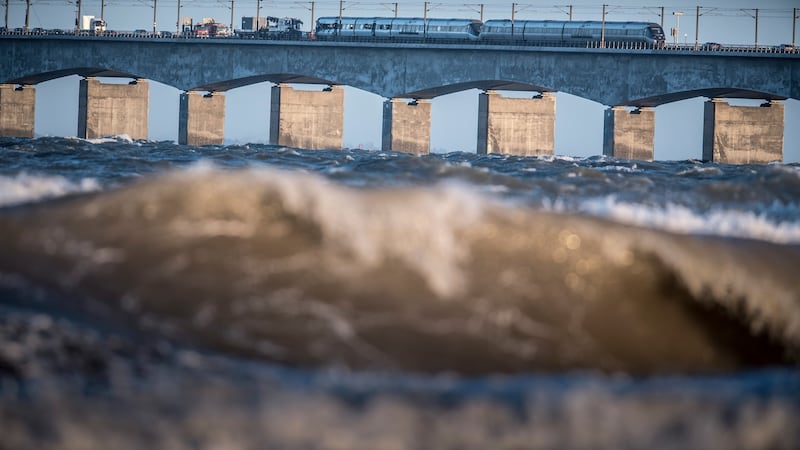Danish police said on Thursday the death toll from a train crash on Wednesday has risen to eight from six people. Five women and three men were killed in the incident on a bridge linking Denmark’s two main islands.
Very severe injuries made the identification difficult, the police said, but they were reasonably confident about the identities of four victims and had a good idea of who the other four people were, based on the possessions and other traces found on the train.
“The police can now conclude with a large degree of certainty that there were no foreign nationals among the fatalities,” the police said.

The train with 131 passengers on board was heading towards the capital Copenhagen when it hit debris from an oncoming freight train. The incident happened early on Wednesday during a severe storm that hampered the rescue operation on the 1km Great Belt Bridge between Zealand and Funen, Denmark's two major islands.
Aerial TV footage showed a front side of the passenger train ripped open. Photos showed crates of beer on the freight train and a tarpaulin on top torn in pieces.
Jesper Nielsen told Denmark's TV2 he was riding on the passenger train and it "was out on the bridge when there was a huge 'bang' ... very quickly thereafter, the train braked."
The rail operator, Danish Railways, told Denmark's TV2 the victims were passengers on a train going from the city of Odense, on the central Danish island of Funen, to the capital Copenhagen when the accident took place at about 8am.
Police declined to comment directly on a report from Denmark’s TV2 channel that a large freight container had likely fallen off the cargo train.
"It is much too early to speculate as to what might have caused it," chief police investigator Joergen Andersen told reporters. "It has been a pretty serious accident."
The accident, in which 16 people were injured, took place on a road-and-rail bridge, part of the Storebaelt system of bridges and a tunnel that link the Danish islands of Zealand and Funen.
The system was closed to cars overnight because of strong winds but trains were allowed to continue using it.
Cause of accident
Police spokesman Lars Braemhoej said one possible cause of the "considerable damage" on the passenger train was getting struck by cargo from the freight train but noted authorities "do not know precisely what caused the accident".
Police urged passengers to contact relatives and tell them if they were safe and urged people not to share photos or videos of the accident.
Flemming Jensen, the chief executive of state-owned Danish Railways, said police and the Danish Accident Investigation Board was investigating. He said the operator “will contribute everything that we can to the investigation”.
Bo Haaning, of the Danish Accident Investigation Board, was quoted as saying it could take months before the cause of the accident could be determined.
Kasper Elbjoern, spokesman for the Danish brewery group Carlsberg, confirmed a freight train transporting its cargo was involved in the accident.
The government agency responsible for Danish railways said on Twitter no further trains would cross the Storebaelt link on Wednesday.
It added it was aiming to allow train crossings to resume on Thursday.
Road traffic resumed Wednesday with a 50kph speed limit.
"Ordinary Danes on their way to work or heading home from the Christmas holidays have had their lives smashed," prime minister Lars Loekke Rasmussen said as he issued his condolences.
Denmark's Queen Margrethe said the "terrible accident ... touches me deeply."
In 1988, eight people were killed and 72 injured when a train derailed because of high speed near Soroe, west of Copenhagen.
Denmark’s worst train accident occurred in 1919, when an express train collided with a stopped train in Copenhagen due to a dispatcher error.
A total of 40 people were killed and some 60 were injured. – Reuters/PA








